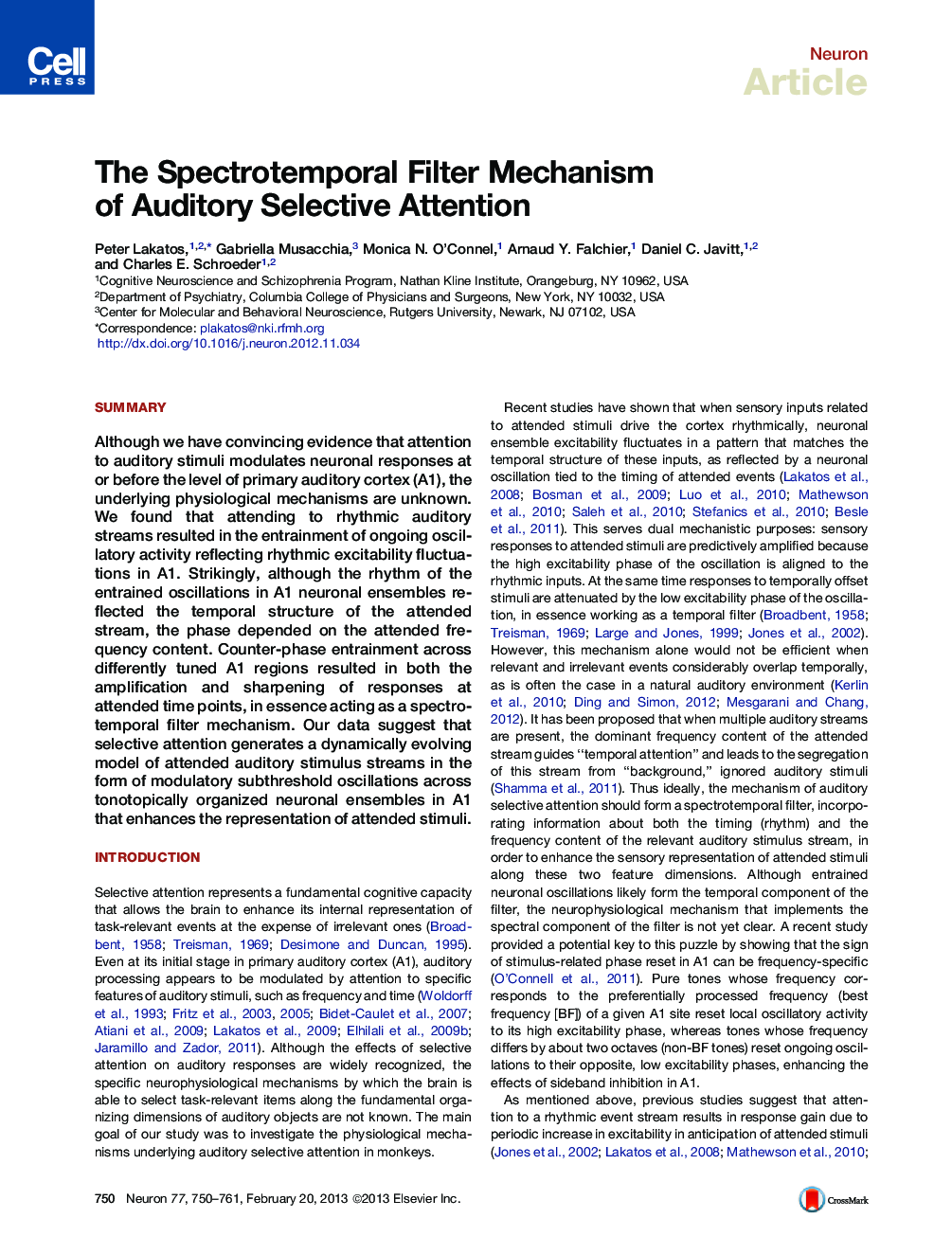| Article ID | Journal | Published Year | Pages | File Type |
|---|---|---|---|---|
| 4321369 | Neuron | 2013 | 12 Pages |
SummaryAlthough we have convincing evidence that attention to auditory stimuli modulates neuronal responses at or before the level of primary auditory cortex (A1), the underlying physiological mechanisms are unknown. We found that attending to rhythmic auditory streams resulted in the entrainment of ongoing oscillatory activity reflecting rhythmic excitability fluctuations in A1. Strikingly, although the rhythm of the entrained oscillations in A1 neuronal ensembles reflected the temporal structure of the attended stream, the phase depended on the attended frequency content. Counter-phase entrainment across differently tuned A1 regions resulted in both the amplification and sharpening of responses at attended time points, in essence acting as a spectrotemporal filter mechanism. Our data suggest that selective attention generates a dynamically evolving model of attended auditory stimulus streams in the form of modulatory subthreshold oscillations across tonotopically organized neuronal ensembles in A1 that enhances the representation of attended stimuli.
► Selective attention results in a spatiotemporal modulation of excitability in A1 ► Subthreshold neuronal activity models attended auditory streams via entrainment ► Entrained neuronal oscillations across A1 act as a spectrotemporal filter mechanism ► Oscillatory entrainment modulates and stabilizes responses to attended stimuli
